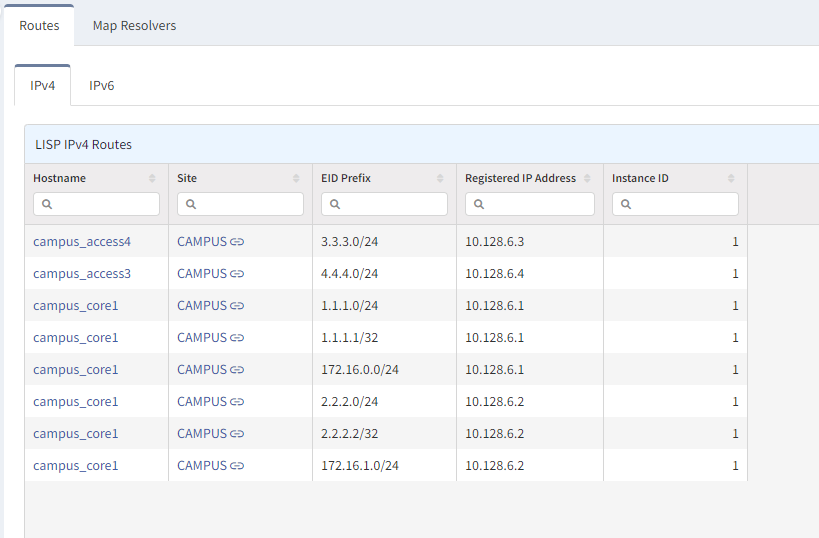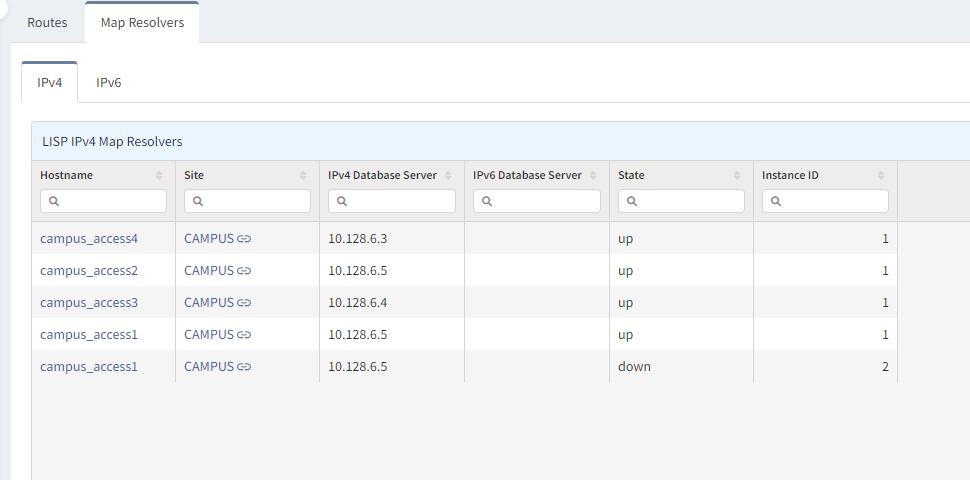Locator/ID Separation Protocol (LISP)
LISP, which stands for Locator/ID Separation Protocol, is a network protocol designed to address scalability and flexibility challenges in large-scale networks. It separates the location and identification functions of IP addresses, providing numerous benefits for network architectures.
Key Concepts – EID and RLOC
LISP assigns each host or device an Endpoint Identifier (EID), a permanent identifier that remains the same regardless of the device’s network location.
In contrast, Routing Locators (RLOCs) represent the current network location of a device and can change as the device moves.
Tabs in Technology → LISP
The Routes tab contains a list of EID/RLOC mappings where hostname is the RLOC, and the EID prefix is the EID.
The Map Resolvers tab contains a list of references to database servers which house the EID/RLOC mappings.
Mapping System
LISP introduces a Mapping System that maintains the association between EIDs and RLOCs. When a packet is sent to an EID, the mapping system is used to determine the current RLOC of the destination device, enabling efficient routing.
LISP Operation
LISP operates through two key components: the Ingress Tunnel Router (ITR) and the Egress Tunnel Router (ETR).
Ingress Tunnel Router (ITR)
The ITR encapsulates packets with a new LISP header. It uses the mapping system to obtain the RLOC for the destination EID and forwards the encapsulated packet to the appropriate ETR.
Egress Tunnel Router (ETR)
The ETR receives the encapsulated packet, removes the LISP header, and delivers the packet to the destination device based on the EID.
Benefits of LISP
LISP provides several benefits for large-scale networks:
- Improved scalability: LISP reduces the size of routing tables, enhancing scalability in networks with many devices.
- Simplified network design: By separating the EID space from the routing infrastructure, LISP simplifies network design and enables flexibility in managing IP addresses.
- Enhanced mobility support: LISP allows devices to change locations without requiring IP address renumbering, offering better support for mobility in networks.
Resources and Further Reading
To learn more about LISP and its implementation, refer to the following resources:

